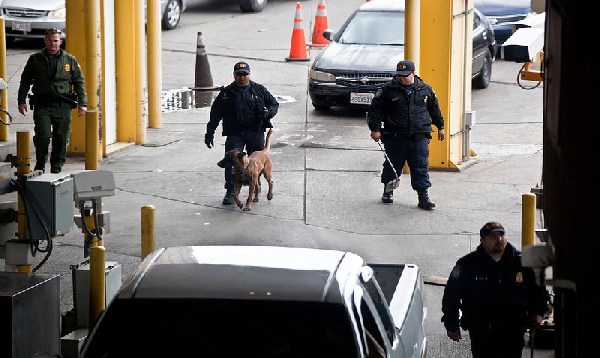Boquillas, Mexico - The Obama administration has green-lighted the first-ever unstaffed computerized Southwest border station in a bid to improve US-Mexico cultural relations. The new station is slated to open January 28th in Texas at Big Bend National Park.
The Homeland Security Department, National Park Service and White House agreed to loosen post-September 11th security measures so pedestrians at the park can cross the Rio Grande River, which forms part of the international boundary line, to eat and shop in Boquillas, Mexico. Out of precaution in 2002, US officials closed the original crossing station, requiring visitors to travel more than 100 miles for another border station.
But now, computers at the new $3.7 million self-service stop will scan citizenship documents embedded with computer chips and facilitate live interviews through video and audio links to a staffed station in El Paso.
The go-ahead to reopen Boquillas as an unmanned station comes about a year after federal officials asked for public comment on the plan. Twenty-three percent of the citizens who responded - 11 out of 47 - opposed the crossing, according to the regulatory docket. Some critics argued the use of remote technology will not adequately secure the border. "It doesn't take a genius to realize that scanning documents doesn't keep terrorists, criminals, drugs, or other contraband out of our country," one respondent wrote.
Despite such contentions, officials ruled that "US citizens and nonimmigrant aliens from Bermuda, Canada, and Mexico" with legal documents can start using the checkpoint one month after the publication of final regulations, which were released on December 28th. The policy makes clear that El Paso officers will call Customs and Border Protection agents onsite if trouble on the ground requires human intervention. And staff will monitor the remote video 24-hours a day, even though entry is prohibited at night.
This is not an entirely new concept, although it has never been tried along the US-Mexico border. Since 2009, CBP agents have been able to instantly verify the identity and legal status of travelers by scanning citizenship documents. And the agency has successfully used similar remote-access technology at entry points along the Canadian border.
Along with adding computerized border controls, the US government also is bulking up human patrols in the surrounding area, according to the documents. For years, CBP agents and park enforcement rangers have roamed the park to combat illegal immigration and drug trafficking. Now officials are constructing new residences inside Big Bend so agents can permanently work and live there, the notice stated.
Low Risk, High Reward
Government officials contend the hybrid human-machine surveillance will actually make security stronger at the location, which is already difficult to cross. There are no roads or bridges enabling vehicles to smuggle contraband, they noted last week. The Rio Grande is deep enough that visitors will have to be ferried across the river in small boats.
Still, one detractor commented about "current drug cartels" that will view the reopened crossing as "a backdoor to the US" And another critic dismissed the passageway as mere charity for Mexicans who "can cross over and try to sell trinkets to American tourists."
For others, the opportunity to visit Mexico while at Big Bend is a draw. One woman said she has visited Big Bend many times since the 1970s and "it was just plain fun to visit Boquillas, have some tacos, ride the burros, float across the river, buy a trinket and hope that you helped some very poor people."
Supporters minimized the potential hazards. "The unnecessary hardship visited upon the already poor people in Boquillas was an unblinking proof of the utter disconnect between our nationís capital and Americaís far-flung reaches . . . only an elected idiot would consider something like the Boquillas crossing as a danger to the United States," one observer commented.
Another proponent pointed to potential business opportunities for Texas residents: "We hire Mexican citizens to come over and fight our forest fires; surely we can provide a legal crossing for them to come and spend their money here."
Federal officials acknowledge that most of the roughly 15,000 to 20,000 people who cross during the first year will be US visitors buying Mexican food and souvenirs.
But officials also expect the automated checkpoint to boost the US economy. They anticipate more tourists will visit the national park and book longer stays, which should generate additional revenue for Texas. Officials could not estimate the value of potential commerce "because of the absence of data on the number of future border crossers and their willingness to pay for all these experiences," the policy states.
Relatively little money is required for the surveillance technology. Expenses include constructing a small inspection facility and installing hardware. Equipment, such as computer kiosks and surveillance tools, will cost $1,577,000 to set up during the first year. Ongoing operation and maintenance for the technology and other infrastructure is budgeted at $200,000 annually.


